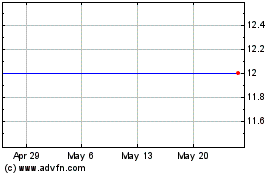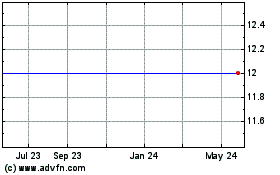Forest Laboratories Announces Acquisition of Additional Rights Related to NXL 104, a Novel Broad-Spectrum Beta-Lactamase Inhi...
December 23 2009 - 10:00AM
Business Wire
Forest Laboratories (NYSE:FRX) announced today its agreement to
acquire additional rights to NXL 104, which amends the terms of its
prior agreement with Novexel covering the combination of NXL 104
with ceftaroline and adds additional rights to the combination of
ceftazidime and NXL 104, through a transaction with AstraZeneca
executed immediately following AstraZeneca’s announced acquisition
of Novexel, S.A.
NXL 104 inhibits bacterial enzymes called beta-lactamases that
break down beta-lactam antibiotics including cephalosporins. It is
designed to be co-administered with select antibiotics to enhance
their spectrum of activity and counteract bacterial resistance.
In January 2008, Forest licensed from Novexel, North American
rights to NXL 104 in combination with ceftaroline, and obtained a
right of first negotiation in North America to a ceftazidime/NXL
104 combination.
In the current transaction with AstraZeneca, Forest has
significantly expanded its overall interests in NXL 104, acquiring
full worldwide rights to the ceftaroline/NXL 104 combination while
simultaneously licensing rights outside the United States, Canada
and Japan to AstraZeneca. Forest also will receive royalties on
AstraZeneca’s international sales of the ceftaroline/NXL 104
combination. The transaction eliminates all future milestone
payments (totaling €75 million) and royalty payments of
approximately 10% on sales of ceftaroline/NXL 104 which Forest
would have owed Novexel under the original license. In addition,
Forest gains co-development and full commercialization rights in
the United States and Canada to the ceftazidime/NXL 104 combination
currently under development by Novexel, and in addition, receives
commercialization right to any other combinations involving NXL
104.
Under a separate agreement, Forest and AstraZeneca have agreed
that following completion of the acquisition, Forest will pay
Novexel, then an AstraZeneca group company, $210 million in
consideration for the additional rights to NXL 104 being acquired,
which represents approximately 50% of AstraZeneca’s acquisition and
related transaction costs. Forest may also be obligated to pay
certain additional costs and half of certain future development
milestone payments in connection with the transaction. Forest will
share with AstraZeneca, the costs of worldwide development of the
ceftaroline and ceftazidime combinations with NXL 104. The
transaction is expected to close in Forest’s fiscal fourth quarter
following satisfaction of customary closing conditions, including
the expiration of the applicable waiting period under the
Hart-Scott-Rodino Antitrust Improvements Act of 1976.
Howard Solomon, Chairman and Chief Executive Officer of Forest
Laboratories said, “This transaction broadens Forest’s antibiotic
product portfolio which will now include drugs principally active
against both gram-positive pathogens (ceftaroline/NXL 104) and gram
negative pathogens (ceftazidime/NXL 104), to address virtually the
entire spectrum of infectious bacterial pathogens and to bring more
useful antibacterial therapies to patients suffering from serious
and potentially life-threatening infections. We are also delighted
to expand our existing relationship with AstraZeneca and to
collaborate with them on the development and commercialization of
these important antibiotics.”
“Building AstraZeneca’s anti-infective portfolio has become a
strategic priority as antibiotic-resistant bacteria pose a growing
threat to human health,” said Anders Ekblom, AstraZeneca Executive
Vice-President of Development. “The innovative structure of this
agreement allows us to build on our existing collaboration with
Forest to create value, share costs, and reduce exposure to risk
while developing two novel antibiotic combinations that address a
growing problem for clinicians and patients. Utilising Novexel’s
NXL 104, these combinations have the potential to outwit bacteria
that would otherwise be resistant to antibiotics.”
Forest is developing the ceftaroline/NXL 104 combination to
treat hospital infections caused by gram-positive pathogens
including methicillin-resistant Staphylococcus aureus (“MRSA”) and
multidrug-resistant Streptococcus pneumoniae (“MDRSP”) as well as
extended-spectrum beta-lactamase (“ESBL”)-producing gram-negative
organisms. Forest is currently studying the ceftaroline/NXL 104
combination in Phase I studies.
The ceftazidime/NXL 104 combination is being developed to treat
hospital infections that are caused by gram-negative bacteria,
including Pseudomonas aeruginosa, a pathogen resistant to many
currently used antibiotics. The ceftazidime/NXL 104 combination is
currently being studied in a Phase II complicated intra-abdominal
infections (“cIAI”) study and a Phase II complicated urinary tract
infections (“cUTI”) study, both in hospitalized patients.
A composition of matter patent which claims NXL 104 provides
protection for the combination of NXL 104 with ceftaroline,
ceftazidime and any other agents until 2022, subject to possible
patent term extension.
NOTES TO THE EDITORS:
About NXL 104
NXL104 is a novel injectable non beta-lactam, beta-lactamase
inhibitor, which is being developed to address the increasing
problem of microbial resistance to beta-lactam antibiotics
(penicillins, cephalosporins, carbapenems) mediated by
beta-lactamase enzymes. NXL 104 is a significant advance, as it is
able to inhibit a broader range of beta-lactamases than currently
marketed inhibitors. Its spectrum includes class A (including CTX
and KPC) and class C enzymes.
About Ceftaroline
Ceftaroline is a novel, bactericidal, injectable, broad-spectrum
cephalosporin being developed as a therapeutic agent for the
treatment of complicated skin and skin structure infections
(“cSSSI”) and community-acquired bacterial pneumonia (“CABP”) which
include gram-positive pathogens such MRSA and MDRSP, as well as
common gram-negative organisms. Ceftaroline has demonstrated
antibacterial activity in vitro against vancomycin-resistant
Staphylococcus aureus (“VRSA”) and linezolid-resistant
Staphylococcus aureus. Ceftaroline is a member of the cephalosporin
class of antibiotics, the most frequently prescribed class of
antibiotics in the world. Forest has conducted four pivotal, Phase
III trials with ceftaroline to assess its efficacy and safety
profile in treating cSSSI and CABP. The trials showed that versus
currently marketed comparators, ceftaroline exhibited activity
against gram-positive pathogens (including MRSA and MDRSP) and
common gram-negative pathogens. In clinical trials, ceftaroline has
been generally well tolerated with a safety profile consistent with
the cephalosporin class of antibiotics. If approved, ceftaroline
could be used as a first-line treatment for both CABP and cSSSI.
Forest obtained the worldwide rights (excluding Japan, where Takeda
Pharmaceuticals holds rights) to ceftaroline when it acquired
Cerexa, Inc., a privately held biopharmaceutical company, in
2007.
About Ceftazidime
Ceftazidime is a third generation cephalosporin with broad
spectrum activity against gram-negative bacteria including P.
aeruginosa that was first approved in the United States in 1985.
The utility of ceftazidime is being increasingly eroded by the
emergence of ESBL-producing bacteria. The combination of
ceftazidime with NXL 104 restores the activity of ceftazidime
against beta lactamase-producing gram-negative bacteria including
P. aeruginosa.
About Forest Laboratories
Forest Laboratories (NYSE: FRX) is a U.S.-based pharmaceutical
company with a long track record of building partnerships and
developing and marketing products that make a positive difference
in people’s lives. In addition to its well-established franchises
in therapeutic areas of the central nervous and cardiovascular
systems, Forest’s current pipeline includes product candidates in
all stages of development and across a wide range of therapeutic
areas. The Company is headquartered in New York, NY. To learn more
about Forest Laboratories, visit www.frx.com.
Except for the historical information contained herein, this
release contains forward-looking statements within the meaning of
the Private Securities Litigation Reform Act of 1995. These
statements involve a number of risks and uncertainties, including
the difficulty of predicting FDA approvals, the acceptance and
demand for new pharmaceutical products, the impact of competitive
products and pricing, the timely development and launch of new
products, and the risk factors listed from time to time in Forest
Laboratories’ Annual Report on Form 10-K, Quarterly Report on Form
10-Q, and any subsequent SEC filings.
Forest Road Acquisition (NYSE:FRX)
Historical Stock Chart
From Jul 2024 to Aug 2024

Forest Road Acquisition (NYSE:FRX)
Historical Stock Chart
From Aug 2023 to Aug 2024
